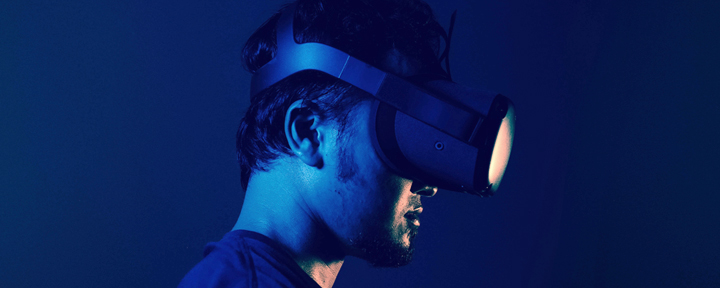
VR, the once ‘futuristic’ technology, is “hot” and starting to show up more and more. Over the span of a couple of decades, it has trickled into medical and law enforcement industries, promising new and better ways of training for doctors, officers, military personnel and other specialty industries.
On the surface, VR headsets sound almost too good to be true, the cure-all for the training needs of police. However, if you spend even 5 minutes actually going through the current VR training programs you will notice problems come to light.
Tools of the Trade
For the full training effect, the trainee must be able to deploy the tools of their trade, such as firearm, Axon® TASER®, OC and flashlights. Moreover, these tools must be able to replicate the real-world but most VR today can only be ‘close’ to the real-world. Why is ‘close’ not good enough? Can you imagine training for a hostage situation where the pistol was a different weight and shape and the tracking was off just enough to where you don’t know if your shot would hit the hostage or the hostage taker? You’d leave the training potentially worse-off and more confused than before the training began. This is called negative training and, like the ‘do no harm’ code in medicine, it is also a mantra that instructors live by.
VR Sickness
One of the most common complaints of VR training is the motion sickness—commonly known as “VR Sickness” or “Cybersickness.” As a result, individuals experience disorientation, nausea and/or eye fatigue¹. One study discovered more than 80% of participants experienced nausea and that out of those individuals, 9.2% vomited as a result².
Why this happens is quite simple: the brain receives visual information from the eyes that does not match physical information brought by the rest of the body. Or in other words, you see movement via VR but naturally do not feel the same exact movement in your inner ear¹.
De-escalate Polygons?
In addition to the problem of correct tracking and movement—or really, the lack thereof—is the problem of CGI (computer generated images – like a video game character). Headsets typically utilize CGI environments and subjects, making it easier for the officer to ‘look’ around the environment and see from every angle.
But think about what it takes to make CGI look human. It’s a careful combination of natural body movement, eye movement, subtle facial and body cues, and more. To create a realistic human takes an entire team of graphic artists and animation specialists, who still struggle to make ‘CGI humans’ look human.
This is because of the “Uncanny Valley”; when a simulated human becomes 99% lifelike, humans naturally focus on the missing 1%³. Whether it is the slack skin, off-kilter movements or lack of sparkle in their eyes, we become off-put and distracted by the subject. Instead of seeing 99% of a human they see 100% of a non-human, video game avatar. As such, it is unrealistic to expect officers to train with CGI subjects when the officers themselves are disconnected by the fake characters.
Officer training is not a game and should not be treated as such. Although VR has continued to improve its technologies and visuals, there are side effects and immersion-breaking problems that cannot be ignored. Instead, departments must supply the most realistic, beneficial and skill-building training to their officers. Find out how by contacting a VirTra representative or watching our training here.
Sources:
- Eunhee Chang, Hyun Taek Kim & Byounghyun Yoo (2020) Virtual Reality Sickness: A Review of Causes and Measurements, International Journal of Human–Computer Interaction, 36:17, 1658-1682, DOI: 10.1080/10447318.2020.1778351
- Stanney KM, Hale KS, Nahmens I, Kennedy RS. What to Expect from Immersive Virtual Environment Exposure: Influences of Gender, Body Mass Index, and Past Experience. Human Factors. 2003;45(3):504-520. DOI:10.1518/hfes.45.3.504.27254
- Thompson, Clive. (2004). The Undead Zone Why Realistic Graphics Make Humans Look Creepy.
Recently Published
Join Our Newsletter







